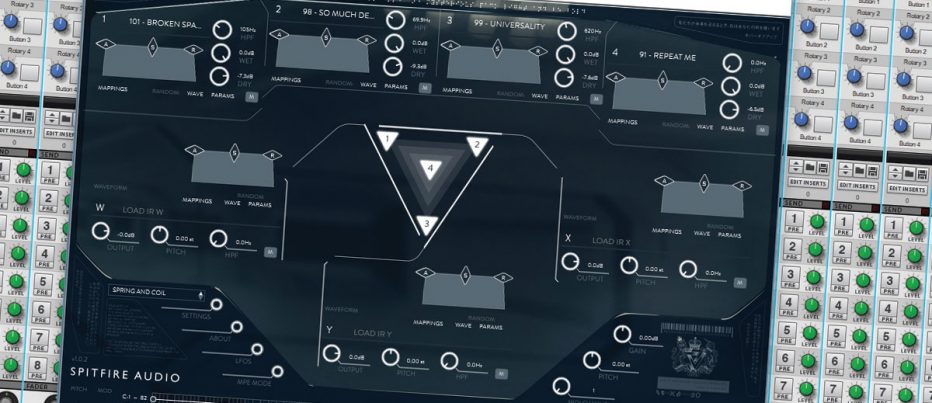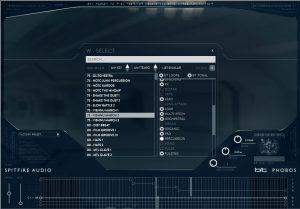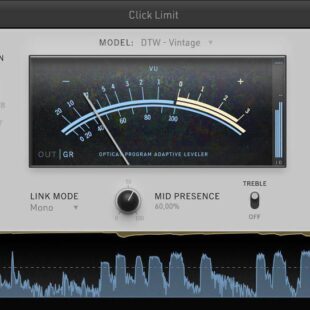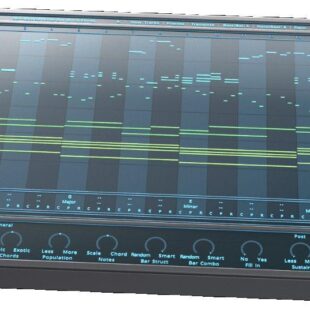Spitfire Audio BT Phobos – Into the Deep End
Spitfire Audio has broken away from the Kontakt platform and entered the VSTi market finally with a somewhat leftfield first parry, focusing directly on the electronica scene with BT Phobos. Join us as we dive headfirst into the weird and wonderful world of polyconvolution synthesis.
Updated September 2022
BT Phobos is a polyconvolution synthesiser….and if like me at first you have no idea what that means, let me do my best to explain. Hopefully, this all makes sense – and yes, you will be tested on this later.
First though, a little info on the synth. Phobos is ideal for film, TV and contemporary electronica compositions, it is an atmospheric type synth that features slowly evolving and morphing elements to produce unique and strange textures. The myriad of included presets all take time to develop, flicking quickly through presets is not something you can do if you want to get a full picture of the synth’s capabilities. Some presets can take minutes to develop fully, each stage of the evolution process capable of branching off into tangents by evoking any number of the included synthesis modulation controls. Oftentimes, a present that starts off quite vanilla ends up becoming a wonderfully rich and deep sound when a little delay, filtering, and morphing is introduced.
As typical of Spitfire Audio libraries, BT Phobos is not an up-front in-your-face monster, preferring to play with space, airiness and quiet emptiness. This is a vast synth containing traditional synthesis processes, such as your LFOs, ADSR and filters – but also a revolutionary new convolution engine, which is, in essence, a very clever reverb processor. But there’s a lot more to it than that, a whole lot more.
Polyconva….eh?
If you have an understanding of the very basics with convolution reverbs, you’ll know someone sets up a microphone in a nice environment, say a church, and records a sharp sound, usually a starter’s pistol, sine wave sweep or such thing. Then the pistol shot is removed from the beginning of the recording and the remaining ambient tail is fed into a convolution sampler which is then applied to a target sound, for instance, your vocalist – and hey presto, they sound as if they were standing in the environment where the gun was fired. It was advanced stuff 15 years ago, but now pretty much a standard affair in most modern digital studios.
In a very simplistic nutshell, BT Phobos is doing this, only replacing the starter’s pistol with a pre-recorded sample.
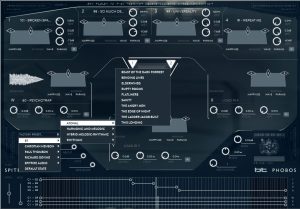
The ‘nice environment’, church or whatever location you would have traditionally used is defined within the instrument as small, medium or large, and instead of a starter’s pistol, both the convolution source and destination samples can be chosen from a huge collection of weird and wonderful samples. Everything from synth pulses, pads, and atmospheres through to rhythmic loops and drum grooves.
If you’re keeping up with the class, now you’ll start to see why BT Phobos is pretty amazing and powerful. The synth can process up to three source convolutions and four destinations, mixing freely between each in real-time manually or with automation. In addition, each of the sources and destinations has full ADSR, offset, gates, and typical synthesis LFO, filters, and panning. Setting up the source and destination elements is as simple as choosing samples from a dropdown list.
The real fun is in using the convolution triangle, a real-time mixer of sorts built right into the synth. Here are four pucks representing each of the destination element’s mix levels. These control the level of the effect applied to each convolution source and can be freely moved around in the space, often creating unusual by-effects when interacting with each other. Each of the three edges of the triangle act like a wand or rod, in that one end is the tip, the other has a cable that is connected to each convolution control panel – this indicates the end that is louder, so dragging your puck more towards here results in more of the convolution effect. It’s an unusual play on the common X/Y pad setup you will see on other synths, but only takes a few minutes to get the feel of and then right away makes much more sense.
All elements for both source and destination have simple synthesis controls – ADSR envelope, highpass, pitch controls, LFO, gates, MIDI CC and all manner of manipulation effects. Further adding to the experimental approach of the instrument are two sample or parameter randomizers, and a full keyboard editor to assign key ranges for both source and convolution output.
So, yes – it’s pretty advanced stuff with tonnes of control options. After your head stops spinning we shall continue…
Brian Wayne Transeau (born October 4, 1970), better known by his stage name BT, is an American music producer, composer, technologist, audio technician, multi-instrumentalist, singer, and songwriter. An artist in the electronic music genre, he is credited as a pioneer of the trance and intelligent dance music styles that paved the way for EDM, and for “stretching electronic music to its technical breaking point.” He also creates music within many other styles, such as classical, film composition and bass music.
BT is also known for pioneering the stutter edit. This production technique consists of taking a small fragment of sound and repeating it rhythmically. BT was entered into the Guinness Book of World Records for his song “Somnambulist (Simply Being Loved)”, recognized as using the largest number of vocal edits in a song (6,178 edits). BT’s work with stutter edit techniques led to the formation of the software development company Sonik Architects, developer of the sound-processing software plug-ins Stutter Edit and BreakTweaker, and the live audio and visual remix app called Sonifi.
(From Wikipedia)
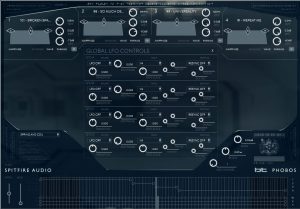
There is a massive collection of samples to choose from, all of which (that I’ve heard so far) sound amazing. You can audition a sample before loading by alt-clicking it, and filter by a large selection of themes and styles. There is a search facility, but unfortunately, I couldn’t get our copy to accept typing input.
As far as presets are concerned, there is a mountain of them. The first bank of BT’s personally curated collection contains 716 to get you started, and considering they have estimated something like 900 trillion possible settings, I think you’ll be ok with sounds for some time to come.
The Good, the bad and the really ugly
Let’s talk about some of the cons with the device, as unfortunately there are a few.
I had a few crashes on the first installation in Reaper and Cubase Pro but has been stable in Reason 9.5 so far. It’s v1.0 of their first VSTi, a few teething issues are to be expected.
There is an unbearably long load time on all platforms though, not only for inserting the instrument on a track, but then for opening it and waiting for the samples to load. Yes, we’re only running 7200 IDE drives for our sample libraries, but nothing else takes anywhere near as long to load – even other Spitfire behemoths like Symphonic Strings and Albion V which are up and running faster by a long shot.
While you have individual ADSR, LFO and other synthesis processes available for each sample, there are no global controls at all. If you want to use an LFO or filter over the entire mix, you’ll need to invoke a separate 3rd party plugin. There are no effects either, so more 3rd party plugins for that. Oh, and no arpeggiator, so yup, more 3rd party stuff. Though you can argue the synth IS the effect, there is no reason why you couldn’t (and I did, often) add more to mix things up further. Something tailored for the synth would have been nice, just feels a little stingy considering the price.
I have mixed feelings about the interface too. I get they’re going for a very futuristic-looking UI, with BT’s contemporary sound samples it makes perfect sense, but it does very little to ease the steep learning curve by making everything so small and artistic. The writing is particularly hard to read on the main system controls – dark grey on black. It wouldn’t be so bad if the UI could be scaled. Though it looks cool, in a Starship Enterprise kinda way, I can’t get over the UI feeling somewhat clunky and unfinished. I think if they had stuck with the road-tested eDNA: Earth-style interface this would have been more successful. What’s most annoying is the patch browser – the back and forward buttons don’t work, so you need to one-by-one click search, choose a curator, choose a category and then choose a patch – trust me, you’re over it after the first 50, and there’s 700+ to go through. Weirdly, remnants from the previous patches remain when you choose a new preset as well, so for the first few seconds you can get some unusual effects – not sure if this is intentional or not, but it every so often leads to ‘oh sheeeeit’ moments when you’re monitor drivers are nearly blown out of their cavities if you’re not careful.
Not that I’m grizzling about the number of sound combination possibilities, but you can’t import your own samples, which I think is a cool trick they’ve missed. While everything included is great, if somewhat repetitive sounding, I would have liked to have heard my own voice or guitars, for example, fed through the system.
On the upside, the included samples are top notch and the resolution of the convolutions is crystal clear. Everything sounds huge and other-worldly. I’m a huge BT fan, so I’m in heaven with all the new sounds. The nature of such an instrument means you’ll never run out of fresh ideas.
In use it feels somewhat familiar to Spitfire’s EVO line, in that sounds evolve slowly over time, never really settling into a loop or tailing off. The sounds usually don’t tend towards immediate, short or attacking tones, but rather long drawn-out soundscapes. Mostly the patches are played with one finger, but you get really interesting results by adding octaves or quick stabs while you hold a root note.
Creating new sounds is largely experimentation and happy accidents, again due to the nature of this type of instrument, you certainly can’t go into BT Phobos with a sound in mind and have any hope of creating it exactly – you will be led off on a totally new tangent as soon as you apply a fresh IR, which is the point of it really. The labelling of convolution sample names is almost inconsequential, as you have no idea of the results of applying it until you try. Not that samples like ‘Ladies Man’ or ‘Notc Surdos’ mean absolutely anything to anyone, you just need to experiment and make mental notes of things you like.
I found though once you’ve established a good foundation sound through randomly dropping samples in, manipulating the filter and envelope controls to fine-tune the output offered a lot more focused results.
Though under the hood it’s an esoteric technical wonder, to be honest, it’s not important to understand all that stuff for making music. I spent a long time watching videos and poring over the manual to get the basics for this review, but I mostly ignore all that stuff and just start randomly playing with samples and dials until things start sounding right. Even though it comes packed with around 700 presets, you are way more likely to stumble upon some happy accident that sounds amazing by tweaking random things than you are to totally understand the science of it and plan something out from scratch.
That, in a nutshell, is the main pro and con of BT Phobos, it’s somewhat of a random music generator – sometimes you’ll win, other times you’ll drop it from your project in frustration.
Conclusions
Spitfire Audio certainly has the heritage, a highly talented production crew – and of course, Mr BT, who comes with a serious music portfolio. But there are loads of other products in this market, not offering the same technology of course, but similar ethereal atmospheric results.
BT’s preset collection is certainly very ‘BT’, almost as if he simply donated all the leftover sample data from his _+ album to be used in the project. Other curated preset offerings from Christian, Paul and Richard, push the boundaries a little harder and showcase more of the capabilities of the instrument in my opinion. This is a huge, lumbering giant of a synth – the focus on quirky style over functionality introduces frustration when learning and performing with the instrument, but there is no doubt the sound output is second to none. With some teething issues sorted, Phobos should become an excellent platform for hosting future designer showcases – perhaps a HZ Phobos, or JXL Phobos….who knows, exciting possibilities though.
Though there is a general aimlessness feel about the creation process, there is plenty of inspirational samples and modulation controls to perk your creative bug when noodling with patches. BT Phobos is addictive and enveloping, the sound quality is top notch with quite literally endless possibilities. This is a powerful synth that encourages exploration and rewards experimentation, and with future expansion possibilities, this platform could certainly deliver some really groundbreaking results.
In a rather crowded section of the market, BT Phobo certainly stands out for its quirkiness, yes – but with the quality of the samples, and unique and creative approach with convolution morphing, nothing else delivers the same evolving and immersive soundscapes. Spitfire Audio are also showing they are willing to take risks and not rest on their laurels, which is really exciting and can only lead to more innovative products like Phobos. Awesome stuff.
Full details, specs and purchasing info can be found on the Spitfire Audio site right here www.spitfireaudio.com

Like the review? Shout us a cup of coffee!

